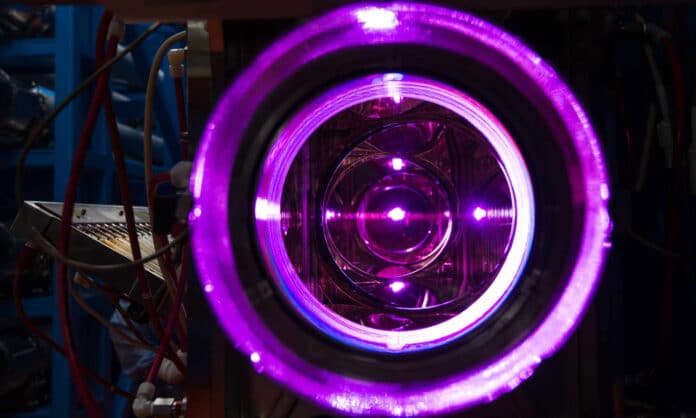Fusion has long been considered the ultimate energy source due to its potential to be safe, clean, affordable, and reliable. Fusion reproduces the same process that drives the sun. Since the early 1960s, researchers have investigated the possibility of compressing thermonuclear material with powerful lasers for a long enough time and at a high enough temperature to cause ignition—the moment the energy output from inertial fusion is greater than the energy delivered to the target.
Scientists achieved ignition at the National Ignition Facility at the Lawrence Livermore National Laboratory in December 2022. However, there are still many obstacles to overcome before fusion energy is technically and economically feasible for widespread production and use.
Researchers at the University of Rochester‘s Laboratory for Laser Energetics (LLE) have, for the first time, experimentally demonstrated a method called dynamic shell formation, which may help achieve the goal of creating a fusion power plant.
Igor Igumenshchev, a senior scientist at LLE, said, “This experiment has demonstrated the feasibility of an innovative target concept suitable for affordable, mass production for inertial fusion energy.”
A target made of a modest amount of hydrogen fuel—in the form of the hydrogen isotopes deuterium and tritium—is frozen into a spherical shell in the traditional method of generating inertial fusion energy. The center fuel is then heated to extremely high pressures and temperatures by being subjected to a laser attack on the shell. When these circumstances are met, the shell bursts into flames and undergoes fusion.
The process’ massive energy output could power a carbon-free power plant. However, a hypothetical fusion power plant would need nearly a million daily targets. Target fabrication now involves a freezing preparation procedure, which is expensive and time-consuming.
An alternative technique for making targets involves injecting a liquid droplet of deuterium and tritium into a foam capsule. Laser pulses cause the capsule to transform into a spherical shell before it implodes, collapses, and ignites. Since liquid targets are used, dynamic shell construction does not require the expensive cryogenic layering that traditional techniques of producing inertial fusion energy require. These targets will also be simpler to achieve.
Goncharov initially introduced dynamic shell creation in a study published in 2020, but experiments still needed to be done to support the theory. Igumenshchev, Goncharov, and his colleagues demonstrated a crucial step in the dynamic shell concept in a scaled-down proof-of-concept experiment using LLE’s OMEGA laser to shape a sphere of plastic foam into a shell that had the same density as deuterium-tritium liquid fuel.
Future study will need lasers with longer and more intense pulses to generate fusion using the dynamic shell formation technique. Still, the current experiment implies that dynamic shell formation could be possible as a route to more realistic fusion energy reactors.
Igumenshchev says, “Combining this target concept with a highly efficient laser system currently under development at LLE will provide a very attractive path to fusion energy.”
Journal Reference:
- I. V. Igumenshchev et al. Proof-of-Principle Experiment on the Dynamic Shell Formation for Inertial Confinement Fusion. Physical Review Letters. DOI: 10.1103/PhysRevLett.131.015102
